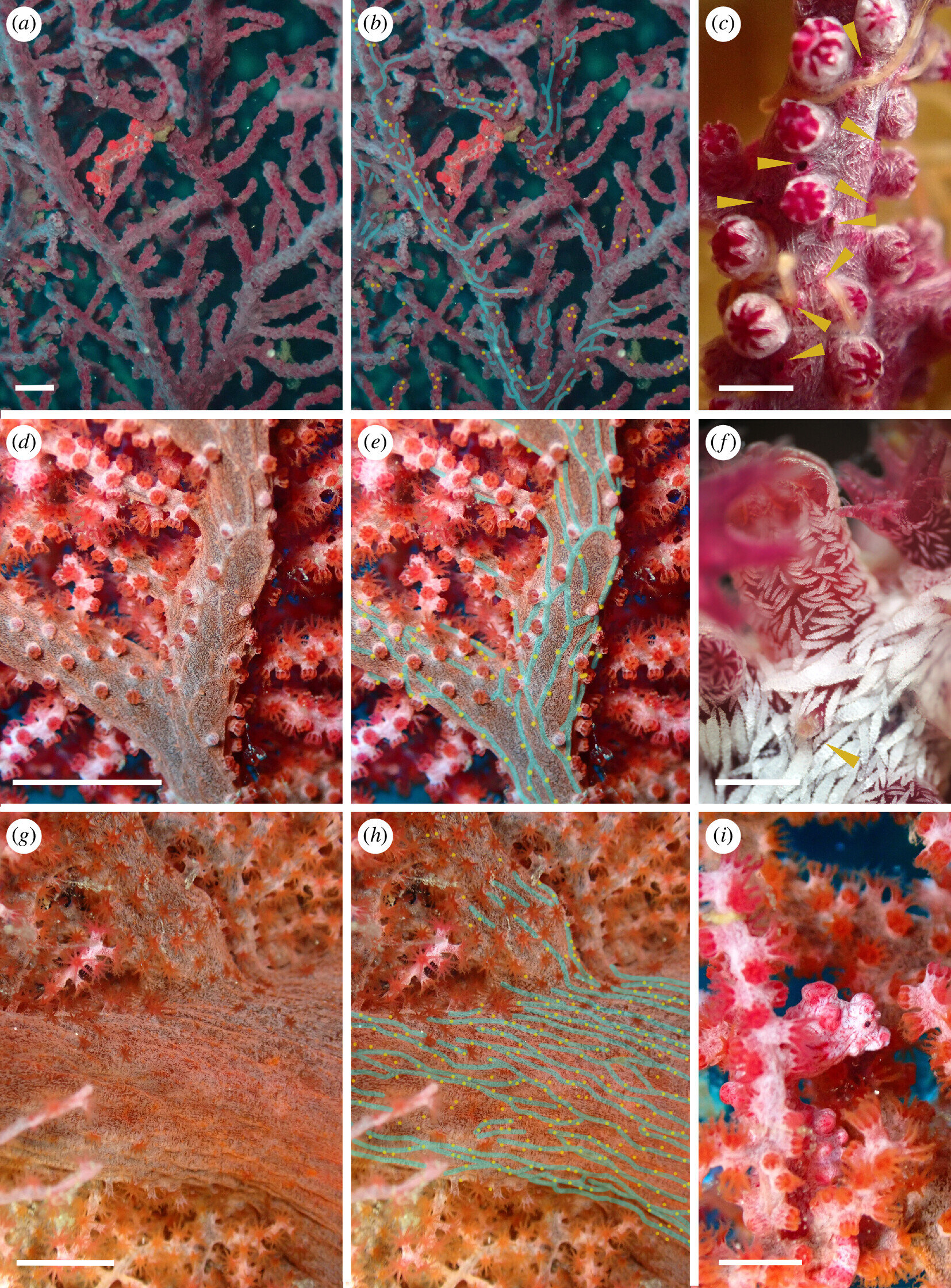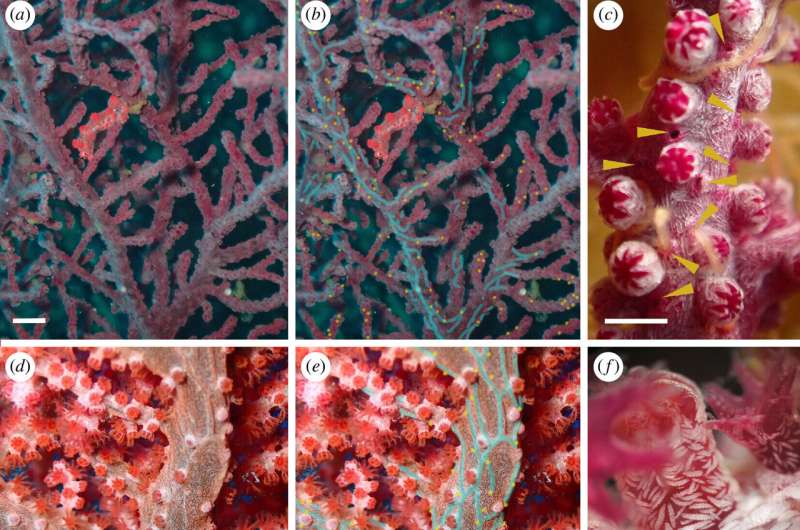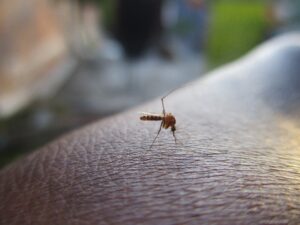

A small team of marine scientists from the University of the Ryukyus, King Abdullah University of Science and Technology and the Kuroshio Biological Research Foundation, has found that a worm species thought to be missing since 1957 has been appearing in photographs taken by citizen scientists for several years.
In their paper published in the journal Proceedings of the Royal Society B, the group describe their analysis of photographs appearing on the iNaturalist citizen science website and what they learned from them.
The work by the team began when a friend of one of the researchers gave them a piece of coral they had retrieved on a recent diving expedition. After taking it back to their lab for study, the team found it was crawling with worms. After studying the worms, they found them to be Haplosyllis anthogorgicola. It was relatively easy to tell which corals were inhabited by the worms because of the burrowing lines they made on their surface.
They also noted that the worm species had only been observed and reported in a science journal one time. Since that time, no other sightings or studies had been recorded in academic journals.
Remembering that pygmy seahorses are a popular photographic target of tourists diving among corals, the researchers began searching for pictures of them on the iNaturalist website—a place where tourists or amateur scientists can post pictures of creatures or things related to science or research efforts.
In so doing, they found that many of the pictures of seahorses had images of H. anthogorgicola in the background. The worms had been photobombing the seahorses for many years, it turns out. Thus, the worm had never gone into hiding or disappeared, it had simply been forgotten about by marine scientists.
In studying the images of the worms and their burrows, the research team found that they were living in multiple sites across Asia and that their numbers were plentiful. In all, they found that the worms appeared in approximately three-quarters of all the seahorse pictures they examined. They also found evidence suggesting that the worms were helping the coral by cleaning up floating debris.
More information:
Chloé Julie Loïs Fourreau et al, The Trojan seahorse: citizen science pictures of a seahorse harbour insights into the distribution and behaviour of a long-overlooked polychaete worm, Proceedings of the Royal Society B: Biological Sciences (2024). DOI: 10.1098/rspb.2024.1780
© 2024 Science X Network
Citation:
Worm species thought to have disappeared has been appearing in photos of pygmy seahorses all along (2024, November 17)
retrieved 17 November 2024
from https://phys.org/news/2024-11-worm-species-thought-photos-pygmy.html
This document is subject to copyright. Apart from any fair dealing for the purpose of private study or research, no
part may be reproduced without the written permission. The content is provided for information purposes only.


